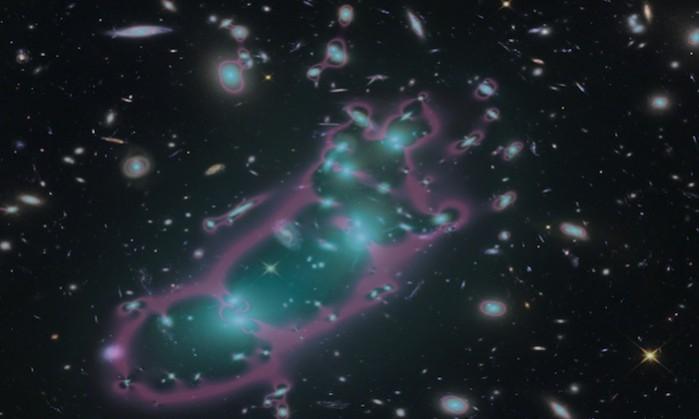
A new technology has been devised that helps astronomers have peek directly into a galaxy, and thanks to it they've now discovered the galaxies that first brought light to the universe, taking it out of a literal dark age!
Also Read: Algae kept outside ISS in extreme conditions for almost 2 years are still alive!
Researchers from the University of Texas at Austin spotted galaxies that are 10 times fainter than any of those seen so far. Studying these galaxies will help scientists learn more about the ancient universe, and how it went from dark to radiant. It will also enable them to better comprehend the cosmic history, a billion years after the Big Bang.
Rachael Livermore and Steven Finkelstein of the UT Austin Astronomy Department, along with Jennifer Lotz of the Space Telescope Science Institute analysed these faint galaxies using images taken by Hubble Space Telescope's Frontier Fields survey.
"These galaxies are actually extremely common, It's very satisfying being able to find them," Livermore said, as per a statement by University of Texas at Austin.
"The problem is, you're trying to find these really faint things, but you're looking behind these really bright things. The brightest galaxies in the universe are in clusters, and those cluster galaxies are blocking the background galaxies we're trying to observe. So what I did was come up with a method of removing the cluster galaxies from the images," Livermore explained.
According to their hypothesis, these galaxies converted electrically neutral, dark galaxies into luminous plasma that isn't easy to see.
"The main motivation for the Frontier Fields project was to search for these extremely faint galaxies during this critical period in the universe's history," Lotz said.
"However, the primary difficulty with using the Frontier Field clusters as an extra magnifying glass is how to correct for the contamination from the light of the cluster galaxies," she added.
Livermore and his colleagues, also used a new technique known as "wavelet decomposition", which includes images taken by the deep-field Hubble Space Telescope that covers the light present in the foreground of the galaxy chunks.
"The wavelet transform allows us to decompose an image into its components on different physical scales. Thus, we can isolate structures on large scales... and remove them, allowing objects on smaller scales to be identified more easily," the scientists wrote in a draft of their upcoming paper, arXiv.org reported.
The enormous gravity of these clusters warps space-time, turning it into a natural lens, boosting Hubble telescope's resolving power by 100 times.
With the help of light-masking, the researchers spotted 167 galaxies that are 10 times less luminous than any galaxies discovered so far. Scientists believe these are the galaxies that re-ionized the universe and took it out of the Dark Age, after the Big Bang, according to space.com.
"This work is unique in its approach to removing this light. This has allowed us to detect more and fainter galaxies than seen in previous studies, and to achieve the primary goal for the Frontier Fields survey," Lotz added.















